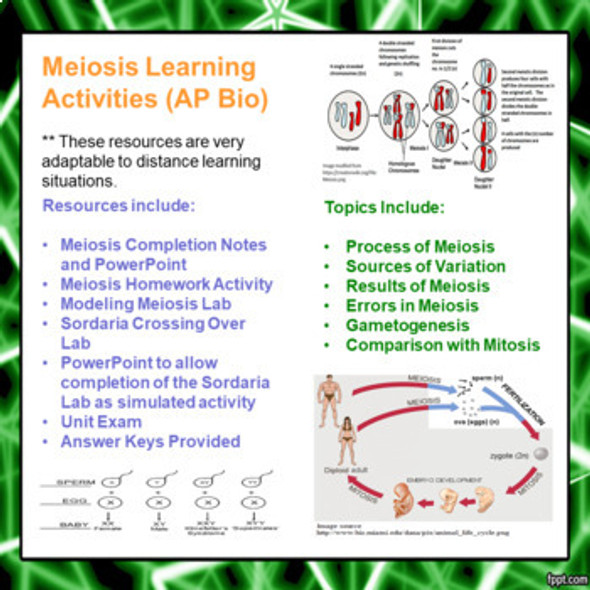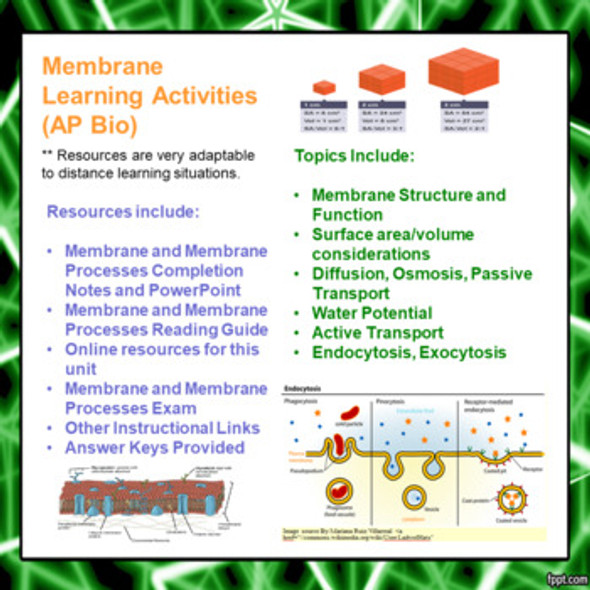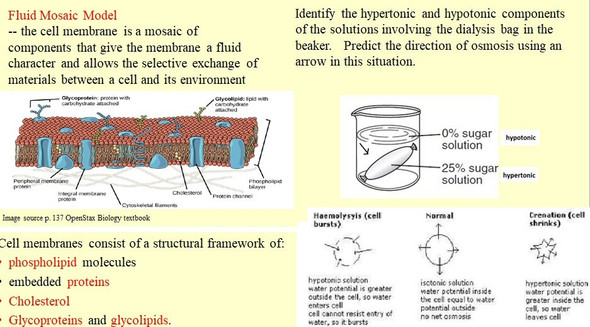Population Genetics/Speciation Learning Activities for AP Biology (Distance Learning)
- Bulk Pricing:
- Buy in bulk and save
- Contributor:
- Monday's Rescue
- Grade Level:
- 9-12
- Product Type:
- Learning Package (Notes, PowerPoint, Lab, Homework)
- File Type:
- doc, pdf, ppt
- Pages:
- 36
- Answer Key:
- Yes
Description
This zip file contains many different activities (36 pages of student handouts and 3 PowerPoints with a total of 61 slides) which can be used to compose a unit for AP Biology or advanced Biology students involving the Topics of Population Genetics and Patterns of Evolution. Some topics addressed in this unit include a discussion of the Hardy-Weinberg Theorem theoretically and mathematically, genetic drift, gene flow, bottleneck effect, allopatric speciation, sympatric speciation, convergent evolution, divergent evolution, parallel evolution, geographic and reproductive isolation, speciation, pre-zygotic and post-zygotic isolating mechanisms, gradualism, punctuated equilibrium and many other related topics. More specifics on the learning goals addressed in this learning package may be viewed near the end of this course description.
This product has been updated to correlate to the new 2019-2020 AP Biology ETS Learning Objectives.
While these lessons were originally designed for my AP Biology curriculum, they can be adapted to any advanced level Biology program. The Educational Testing Service also provides two labs which fit well with this unit. Links to obtain these labs are included in the "read me first" text file in this zip file package. This read me first file also contains links to an online textbook which can be used in replacement of traditional classroom textbooks.
This lesson packet contains a listing of the learning goals, common core learning standards, NGSS learning standards and the AP Biology performance indicators addressed in these materials. These are included in the packet and at the end of the description of this lesson.
Most documents are included in both word and pdf format to allow editing for specific teacher needs. These learning materials are well suited for a distance learning situation.
Answer keys are included for all listed student work items. Student files have been provided in both editable word and pdf format to allow you to edit the activities to meet the needs of the students in your classroom.
The specific contents of the learning package includes the following items (the page count for these items are actual student handouts as answer key page counts are not included):
-- Learning Goals and Objectives for this unit correlated to the AP Bio ETS, NGSS and Common Core Learning standards (2 pages)
-- Population Genetics, Patterns of Evolution and Speciation Completion Notes (15 pages)
-- PowerPoint to accompany the Completion Notes (61 slides)
-- Hardy-Weinberg Bell ringer / Warm-up PowerPoint with answers (3 slides)
-- Hardy-Weinberg and Sickle Cell Anemia Bell ringer / Warm-up PowerPoint with answers (4 slides)
-- Hardy-Weinberg Problems Worksheet One (1 page) (4 multi-step problems)
-- Hardy-Weinberg Problems Worksheet Two (3 pages) (8 multi-step problems)
-- Population Genetics and Patterns of Evolution Reading Worksheet (correlated to the Open Stax Biology textbook free online) (25 questions/5 pages)
-- Teddy Graham (Introduction to Hardy-Weinberg) Lab (6 pages)
-- Population Genetics and Patterns of Evolution Exam (30 multiple choice and 1 short answer question) (5 pages)
ETS AP Biology Learning Objectives:
Enduring Understandings
EVO-1 Evolution is characterized by a change in the genetic makeup of a population over time and is supported by multiple lines of evidence.
EVO-3 Life continues to evolve within a changing environment.
Learning Objectives
EVO-1.H Explain how random occurrences affect the genetic makeup of a population.
EVO-1.I Describe the role of random processes in the evolution of specific populations.
EVO-1.J Describe the change in the genetic makeup of a population over time.
EVO-1.K Describe the conditions under which allele and genotype frequencies will change in populations.
EVO-1.L Explain the impacts on the population if any of the conditions of Hardy- Weinberg are not met.
EVO-3.D Describe the conditions under which new species may arise.
EVO-3.E Describe the rate of evolution and speciation under different ecological conditions.
EVO-3.F Explain the processes and mechanisms that drive speciation.
Learning Goals
Upon the completion of this unit the student will be able to:
1. explain why the population is the basic unit of evolution.
2. explain how microevolution change can affect a gene pool.
3. state the Hardy-Weinberg theorem.
4. write the general Hardy-Weinberg equation and use it to calculate allele and genotype frequencies.
5. explain the consequences of Hardy-Weinberg equilibrium.
6. describe the usefulness of the Hardy-Weinberg model to population geneticists.
7. list the conditions a population must meet in order to maintain Hardy-Weinberg equilibrium.
8. explain how genetic drift, gene flow, mutation, nonrandom mating and natural selection can cause microevolution.
9. explain the role of population size in genetic drift.
10. distinguish between the bottleneck effect and the founder effect.
11. distinguish between and examples of prezygotic and postzygotic isolating mechanisms.
12. distinguish between allopatric and sympatric speciation.
13. explain how geographical isolation can lead to reproductive isolation.
14. explain how introgression and polyploidy cause reproductive isolation and sympatric speciation.
15. discuss the two schools of thought about the tempo of speciation (gradualism vs. punctuated equilibrium).
NGSS Learning Standards
Students who demonstrate understanding can:
HS-LS4-3. Apply concepts of statistics and probability to support explanations that organisms with an advantageous heritable trait tend to increase in proportion to organisms lacking this trait.
HS-LS4-4. Construct an explanation based on evidence for how natural selection leads to adaptation of populations.
HS-LS4-5. Evaluate the evidence supporting claims that changes in environmental conditions may result in: (1) increases in the number of individuals of some species, (2) the emergence of new species over time, and (3) the extinction of other species.
Common Core State Standards Connections:
ELA/Literacy
RST.11-12.1 Cite specific textual evidence to support analysis of science and technical texts, attending to important distinctions the author makes and to any gaps or inconsistencies in the account.
RST.11-12.8 Evaluate the hypotheses, data, analysis, and conclusions in a science or technical text, verifying the data when possible and corroborating or challenging conclusions with other sources of information.
WHST.9-12.2 Write informative/explanatory texts, including the narration of historical events, scientific procedures/ experiments, or technical processes.
WHST.9-12.9 Draw evidence from informational texts to support analysis, reflection, and research.
Mathematics
MP.2 Reason abstractly and quantitatively.
MP.4 Model with mathematics.
Terms of Use
Purchase of the product is for classroom use by the purchaser only. It is a violation for individuals, schools, and districts to redistribute, sell, or post this item on the Internet or to other individuals.
This work is licensed under a Creative Commons Attribution-NonCommercial-ShareAlike 4.0 International License.
This learning package bundle is part of the AP Biology Complete Course. The complete course contains 22 learning package bundles in addition to this one. Save nearly 60% over the cost of buying 23 individual unit learning bundles with your purchase of the complete course.
Check out Monday's Rescue for more great resources!














